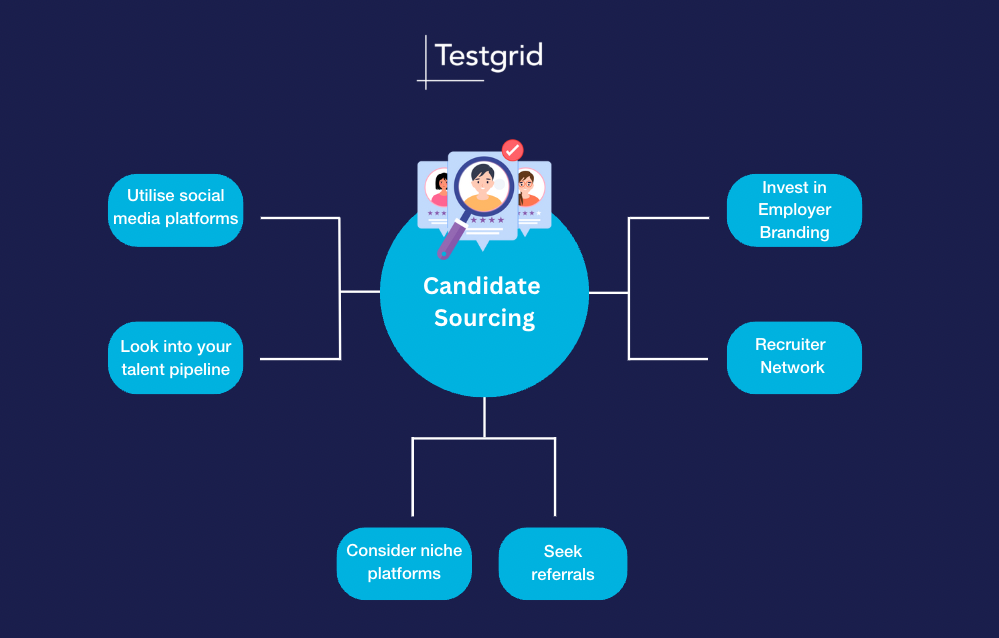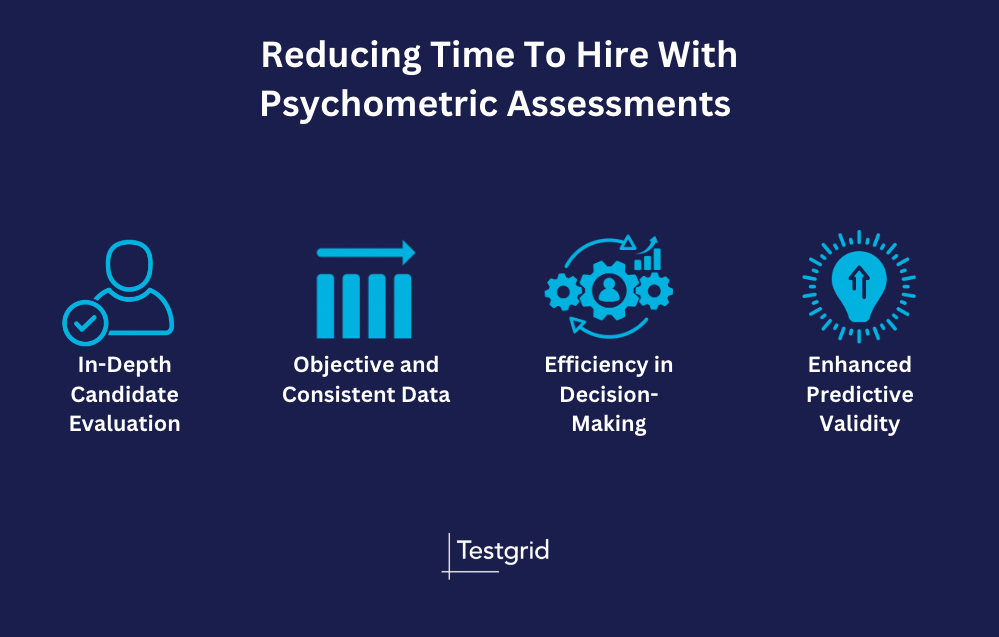What Your Completion Rates Mean Compared to the Market
In the ever-evolving landscape of talent acquisition, numbers often do the talking. One of the key metrics that savvy recruiters keep a close eye on is completion rates. But what do these numbers really signify, and how do they stack up against industry benchmarks? In this comprehensive exploration, we dive deep into the world of completion rates, their significance, and strategies to optimise them.
What Are Completion Rates?
Completion rates, in the realm of recruitment, are a reflection of how many candidates successfully navigate the entire application and assessment process from start to finish. They serve as a crucial indicator of the efficiency and effectiveness of your recruitment strategy. Whether you’re a seasoned HR professional or a talent acquisition novice, understanding these rates is pivotal in attracting and retaining top talent.
Completion rates play a multifaceted role in the recruitment journey. They’re not just mere statistics; they embody the pulse of your hiring process. Here’s why completion rates matter:
1. Efficiency Assessment
Completion rates are akin to a litmus test for your recruitment process’s efficiency. Low completion rates often signal friction in your application process. Imagine your hiring process as a funnel, with candidates at the top. For every candidate that enters, a significant number may drop off along the way, like leaks in a bucket. These leaks represent missed opportunities and potential top talent slipping away. The ideal goal is to plug those leaks, ensuring that more candidates reach the finish line.
Why Candidates May Drop Off:
- Lengthy Application Forms: Lengthy, time-consuming application forms can deter candidates, especially when they have to fill in redundant information or answer too many questions that seem unrelated to the job.
- Complex Navigation: If your application process is difficult to navigate or lacks clear instructions, candidates may drop off due to frustration or confusion.
- Technical Glitches: Technical issues such as slow-loading pages, broken links, or errors in the application portal can disrupt the candidate’s journey, leading to drop-offs.
- Non-Mobile Optimisation: In today’s mobile-driven world, if your application process isn’t mobile-friendly, candidates may abandon it if they encounter usability issues on their smartphones or tablets.
- Poor Communication: Inadequate communication at any stage of the recruitment process can frustrate candidates and lead to drop-offs. This includes delays in acknowledging the receipt of applications, lack of status updates, or unresponsiveness to candidate inquiries. Effective communication is essential to keep candidates engaged and informed.
2. Candidate Experience
An often underestimated aspect is the candidate experience. Completion rates are a reflection of how candidates perceive your recruitment process. High completion rates indicate that your application process is user-friendly, engaging, and devoid of hurdles. Candidates don’t find the journey arduous or confusing; instead, they glide through seamlessly. A positive candidate experience can be a differentiator, making your organisation stand out in a competitive job market.
3. Quality of Applicants
Completion rates aren’t just about quantity; they’re also about quality. High completion rates suggest that candidates who reach the end of your process are genuinely interested and committed. These candidates are more likely to align with your organisation’s culture, values, and job requirements. They represent a pool of potentially exceptional hires. Increasing the quality of your talent pool is paramount to your recruitment process and below are some key factors that play a big role.
Job Description Clarity: The clarity and accuracy of the job description play a significant role in attracting candidates who possess the required skills and experience. A well-defined job description not only sets the right expectations but also helps filter out applicants who don’t meet the criteria.
Sourcing Channels: The channels used for sourcing candidates significantly impact candidate quality. Leveraging both traditional and innovative channels can widen the pool of talent and bring in candidates who might not be actively job seeking.
Assessment Tools: Implementing psychometric assessments as part of the hiring process can dramatically enhance candidate quality. These assessments evaluate cognitive abilities, personality traits, and job-related skills, providing a comprehensive view of a candidate’s suitability for the role.

BENCHMARKING COMPLETION RATES
Psychometric assessments are a powerful tool in modern recruitment. They
While completion rates provide critical insights, it’s essential to remember that they aren’t uniform across industries, job roles, or locations. Let’s delve into a few industry-specific examples:
1. Technology Sector
In the competitive tech industry, high completion rates are often the norm. Companies like Google, Apple, and Amazon have mastered the art of attracting top talent. They offer not only attractive perks but also engaging and interactive application processes. With completion rates well above the industry average, these tech giants can usually cherry-pick from a pool of top-tier candidates.
2. Retail
In the fast-paced world of retail, job roles often involve constant customer interaction and quick decision-making. Completion rates in this industry may be slightly lower. However, candidates who apply for retail positions typically expect a straightforward and swift process. Thus, a smooth and rapid application process tends to yield higher completion rates, albeit with shorter application times.
3. Blue Collar and Industrial
In the blue-collar and industrial sectors (e.g., manufacturing, construction, agriculture), where safety and compliance are paramount, benchmarking completion rates can ensure that candidates complete safety assessments and training modules. Low completion rates in this sector need to be taken more seriously than in any other. They might indicate a lack of engagement or a need for more accessible training materials.
3. Healthcare
The healthcare industry, which values thoroughness and precision, often has longer and more complex application processes. Consequently, completion rates might be lower. However, the candidates who do complete the process are likely to be genuinely interested and committed. This niche industry prefers quality over quantity.

STRATEGIES TO OPTIMISE COMPLETION RATES
Now that we’ve unraveled the significance of completion rates, it’s time to explore strategies to enhance them:
1. Optimise Your Application Process
Streamline your application process, eliminating unnecessary steps and questions. Make it user-friendly and mobile-responsive. A clunky or overly complicated application can deter candidates.
2. Candidate Communication
Keep candidates informed about the process, timelines, and what to expect next. Transparency can reduce drop-offs, as candidates feel more engaged and informed.
3. Testing and Feedback
Test your application process with real candidates and gather their feedback. Use this data to make improvements. Real-world testing provides invaluable insights.
4. Leverage Assessment and Technology
The integration of assessments and technology can be a game-changer. Employing psychometric assessments, including aptitude tests and behavioral evaluations, streamlines candidate screening. By providing objective data on cognitive abilities and personality traits, these assessments help recruiters identify top talent more efficiently.
Video interviews expedite the assessment phase by efficiently evaluating soft skills and cultural fit. They replace time-consuming in-person meetings and enable recruiters to gauge communication skills early on.
Further to that, ATS systems automate administrative tasks such as application tracking and candidate communication. This streamlines the process, allowing recruiters to focus on interviewing and candidate assessment.
5. Benchmark and Continuously Improve
Benchmark your completion rates against industry standards regularly. Set realistic goals for improvement and monitor your progress. Continuously refine your recruitment strategy based on data-driven insights.
In conclusion, completion rates are far more than mere statistics; they offer invaluable insights into the efficiency, effectiveness, and candidate experience of your recruitment process. By benchmarking your completion rates against industry standards and implementing best practices, you can make strides toward attracting, engaging, and securing top talent. In today’s competitive talent landscape, optimising completion rates is a crucial step toward building a robust and agile workforce.
GET IN TOUCH
If you want to talk to one of our experts about streamlining the recruitment process in your organisation, get in touch with our team here, or call 03 9040 1700 to learn more.
